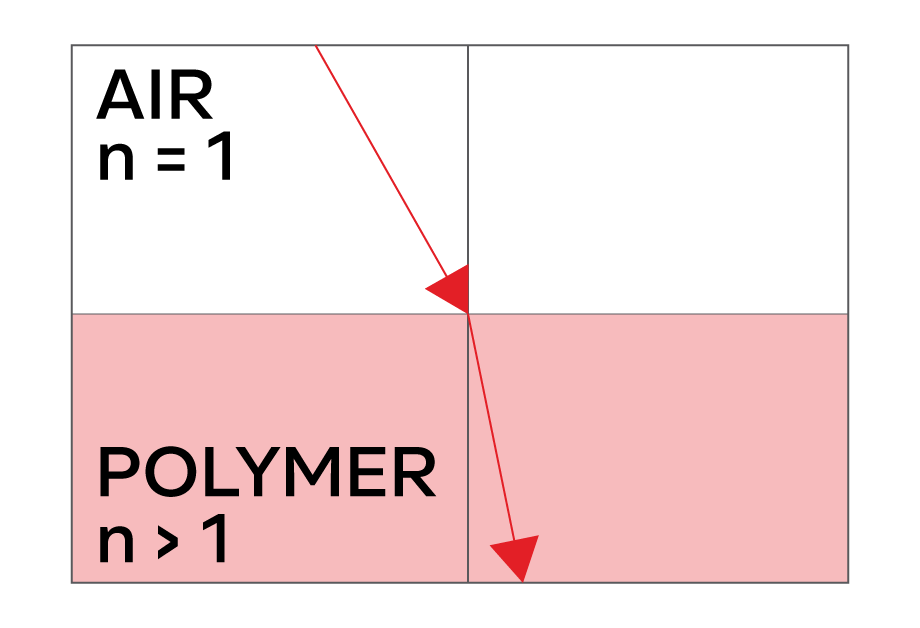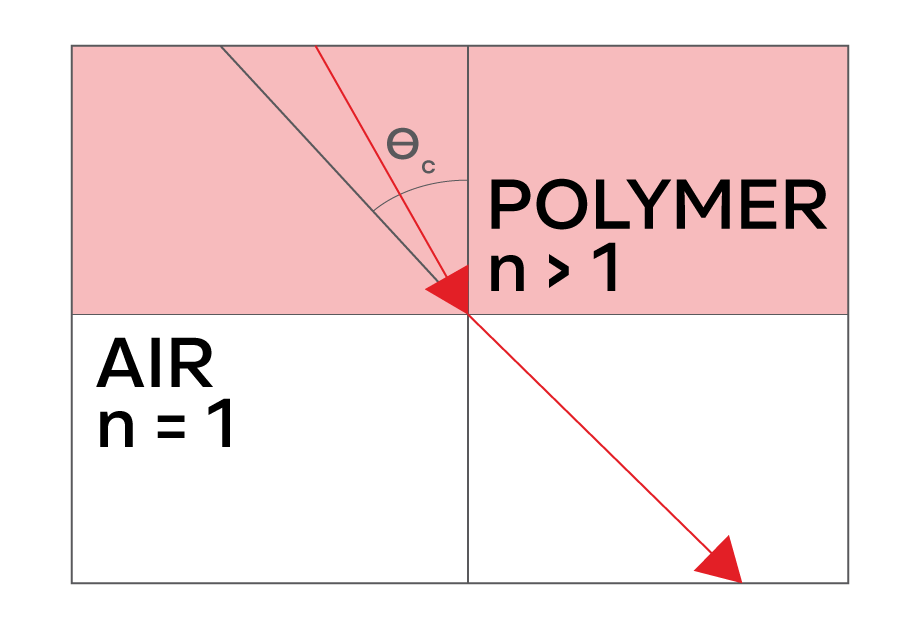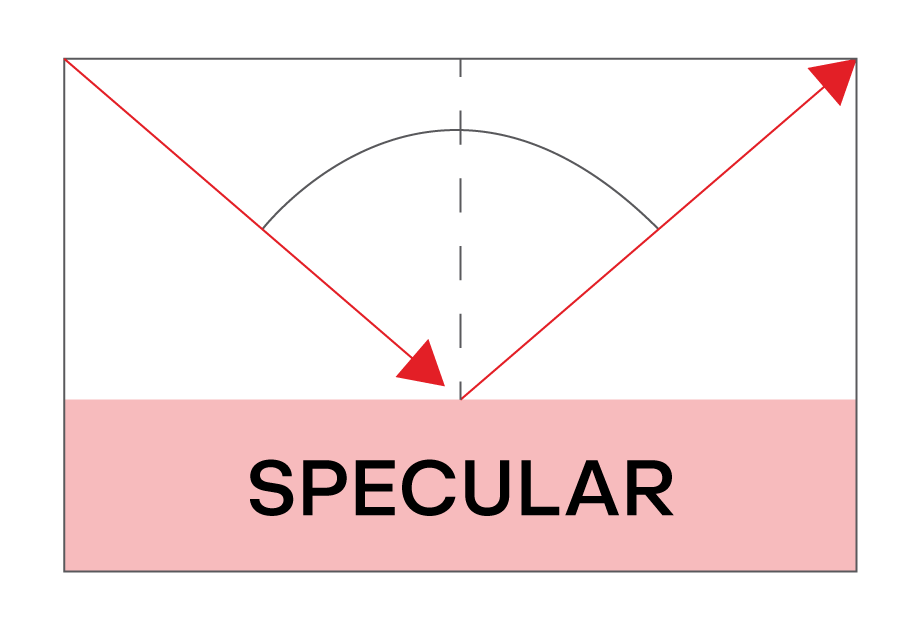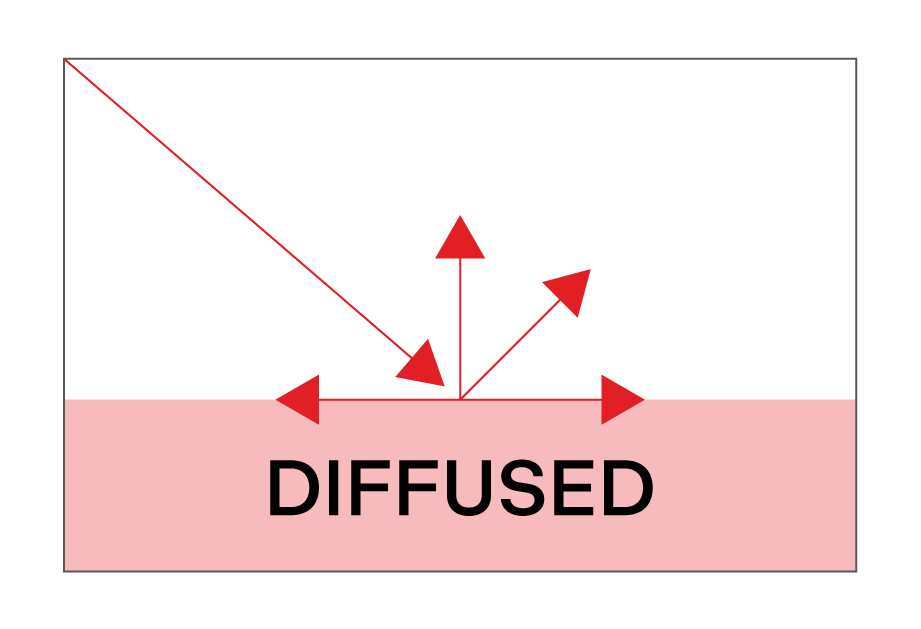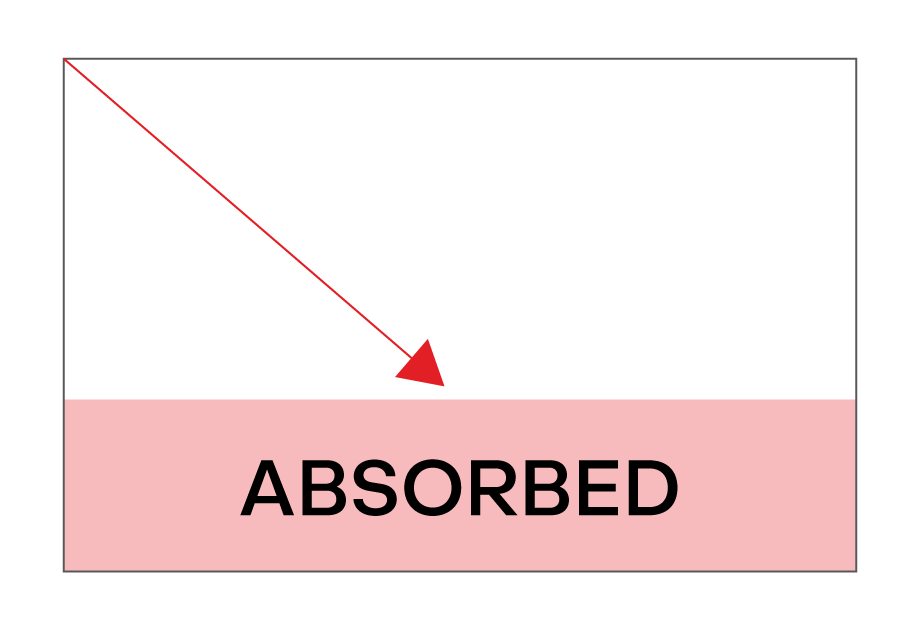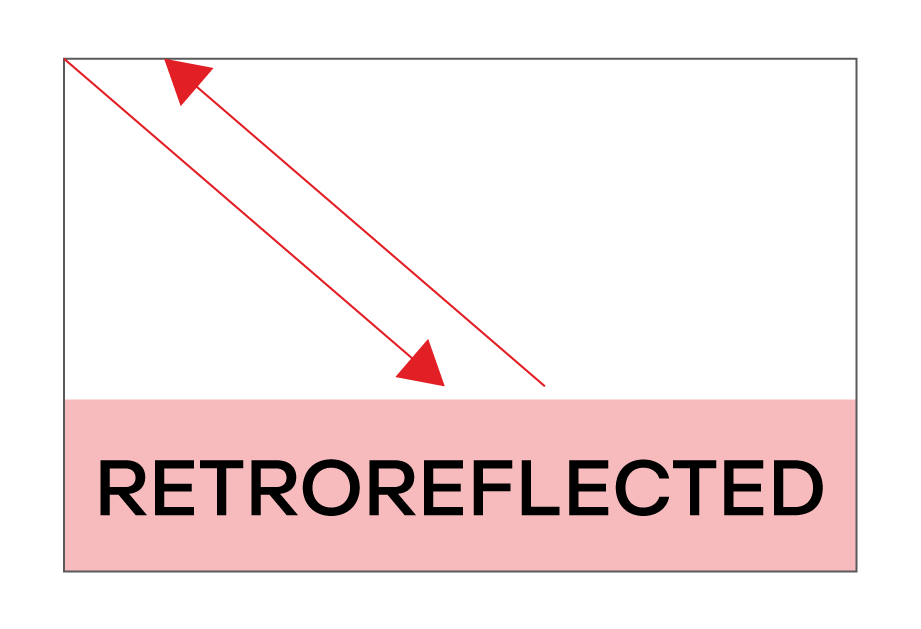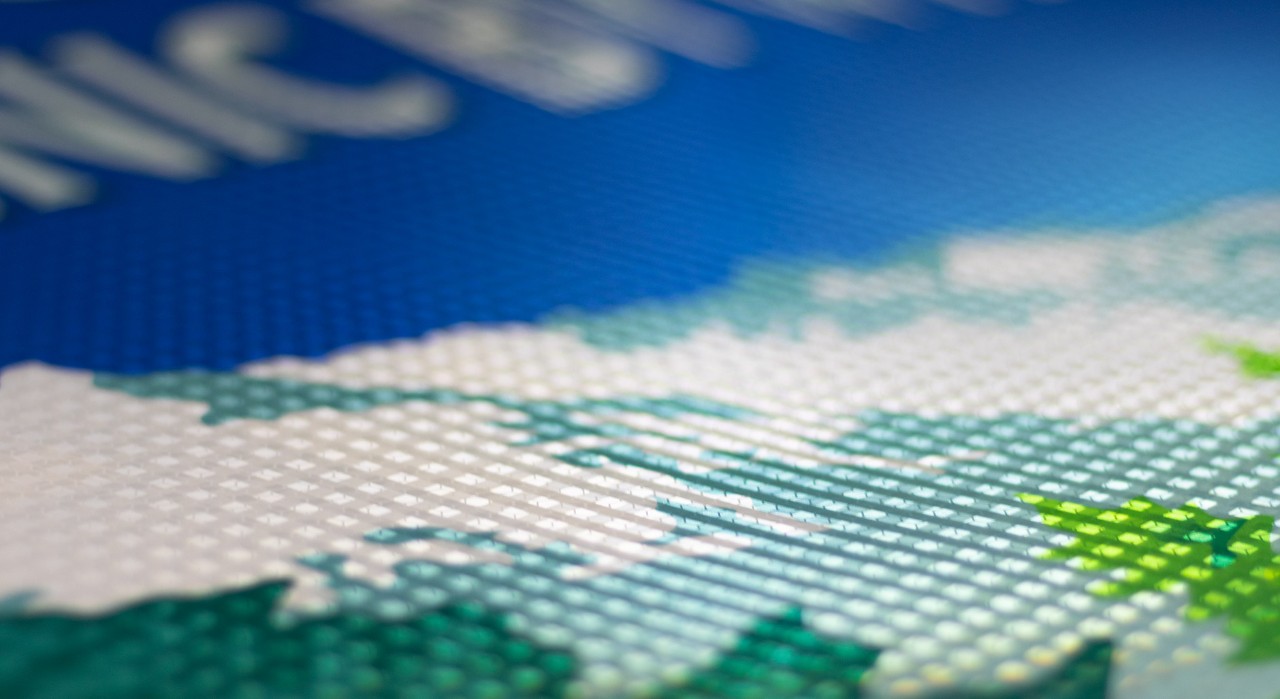Light is a form of energy along the electromagnetic spectrum, and has wave properties. Smaller wavelengths have more energy, while larger wavelengths have less energy. Visible light wavelengths range from 400 nanometers (nm) to about 700 nm—about the size of bacteria.
400 nm (more energy)
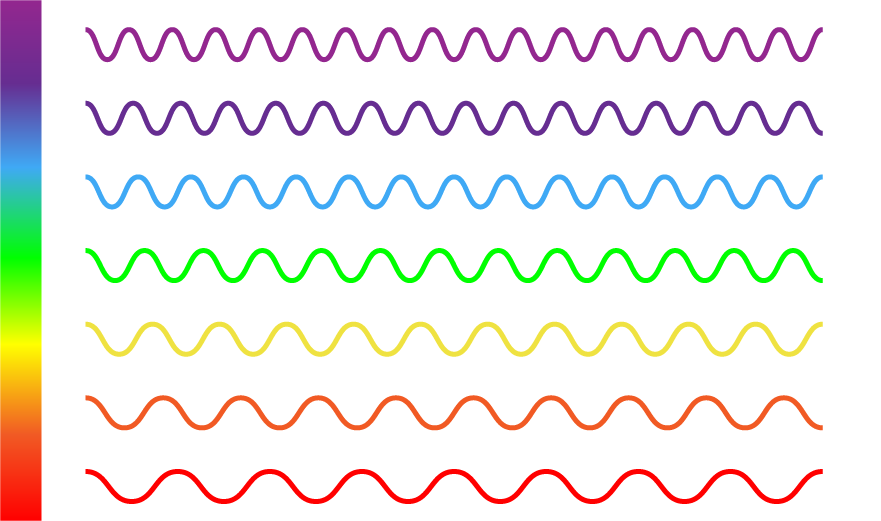
700 nm (less energy)
When light reaches an object, it is transmitted (goes through it), reflected (bounces off), or absorbed—usually a combination of all three. In the case of a transparent object, most of the incoming light will transmit. The object’s optical density will impact its refractive index (n), which is determined by light's velocity as it passes through the object. For example, light traveling from air to glass (faster media to slower media) will bend in one direction, while light traveling in the reverse direction from glass to air (slower media to faster media) will bend the same amount but in the opposite direction.
When traveling from a slower media to a faster media, past a certain angle (θ), the light will bend so much that it is reflected back into the media; this is known as total internal reflection and is how fiber optics and most prismatic sheeting products work.
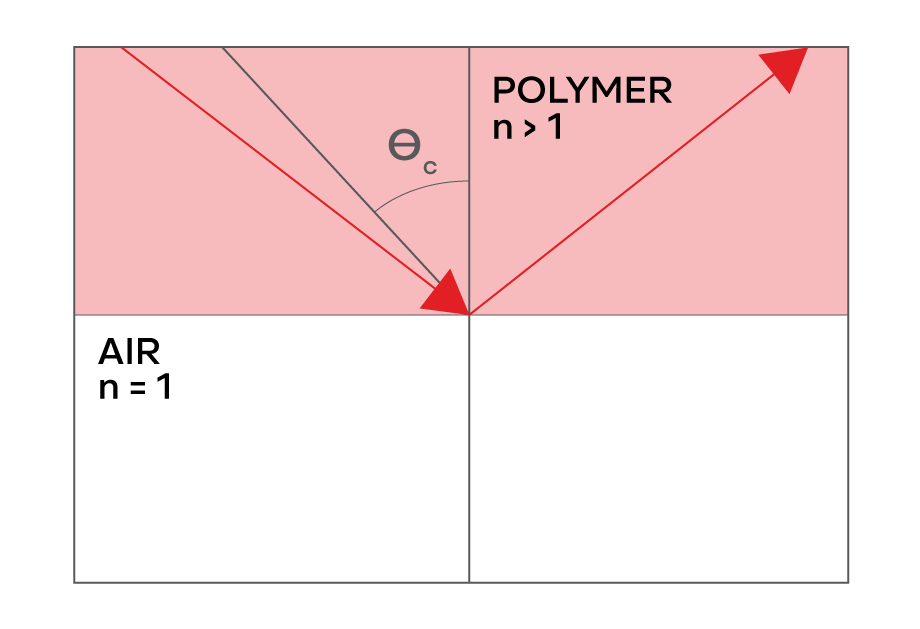
Many objects, however, are not transparent; these objects tend to reflect light. If the surface imperfections of the object are smaller than the light’s wavelength, then the light is reflected like a mirror; this type of reflection is known as specular reflection. If the surface imperfections are larger than the wavelength of the light, then the light is diffused or scattered in various directions.
When light interacts with certain atoms in objects, the electrons of the atoms may absorb the light, converting it into heat. A black object, for example, will interact with the entire spectrum of visible light and absorb it, appearing black because all of the light is converted into heat. Meanwhile, a red object will interact with every wavelength within the visible spectrum except for red, so only red is visible. Finally, when the light is sent back in the same direction it came from, it is retroreflected.



